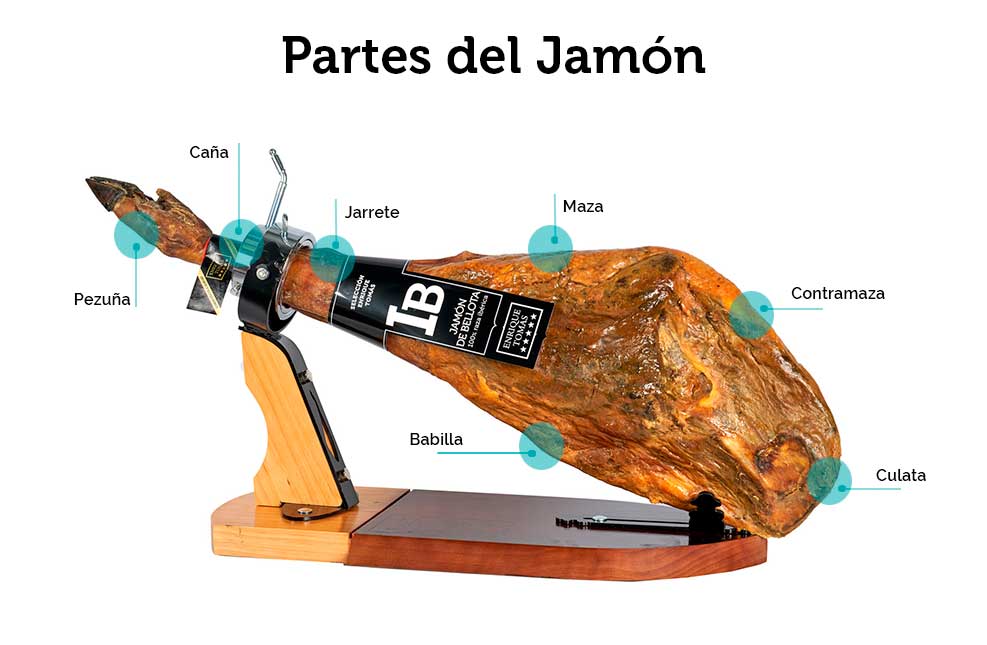
Parts of the Iberian ham, get to know them!
Iberian ham is an unparalleled delicacy, and depending on the area from which its meat is extracted, it will have a more cured or tender flavor, or it may be more or less intense. But what are the parts of Iberian ham?
At Enrique Tomás, we're going to explain each one to you and tell you how to cut them to perfection.
Let's get started!
The Six Parts of Iberian Ham
Let's see what the parts of Iberian ham are:
- Shank: it's the part closest to the hoof and also the narrowest. When distinguishing between Iberian ham and Serrano ham at a glance, the best way to do it is to look at this part; if it's very thin and elongated, the leg will be Iberian, otherwise, it will have been produced with white pig meat. The shank is perfect for making cubes, and if, for any reason, you can't remove it, no worries! Bring it to one of our stores, and we'll take care of it!
- Hock: it's the meat found between the shank and the thigh, and since it's so juicy, aromatic, and tasty, it's the favorite of many ham lovers because it melts in your mouth and fills it with flavor.
- Thigh: it's the part of the ham with the most meat and is tenderer than other areas. The reason for this is that the bone accelerates the curing process, and since the meat of the thigh is farthest from it, it takes longer to mature.
- Counter-thigh: it's located just below, and the same applies as in the previous case.
- Round: it's the part of the piece that is on the opposite side of the thigh and, since it has less meat and it's closer to the bone, it cures earlier. When starting a ham, some say it's best to begin with this part, but at Enrique Tomás, we always say it depends. If you're going to open the piece and finish it right away, you can start with the thigh, so you can enjoy its flavor sooner. However, if you have a small household, and you think it will last for a couple of days when opened, slice the round first to prevent it from over-curing, and then enjoy the thigh; when you're ready to indulge, it will still be tender.
- Tip: as the name suggests, it's located at the end of the ham, just opposite the hoof.
 The six parts of Iberian ham
The six parts of Iberian ham
The hoof is the part of the legs on which pigs stand, that is, the part that is directly in contact with the ground. Many believe that if the hooves are black, it means they come from Iberian pigs, but nothing could be further from the truth!
It can happen that an Iberian pig has white hooves, and a white pig has black hooves; this is relative. As mentioned at the beginning, if you want to distinguish Serrano ham from Iberian ham, you should look at the shank, and now that you know it, avoid being fooled.
However, if you want to be absolutely sure, all you have to do is go to a trusted store. Can you think of a better one than Enrique Tomás?





